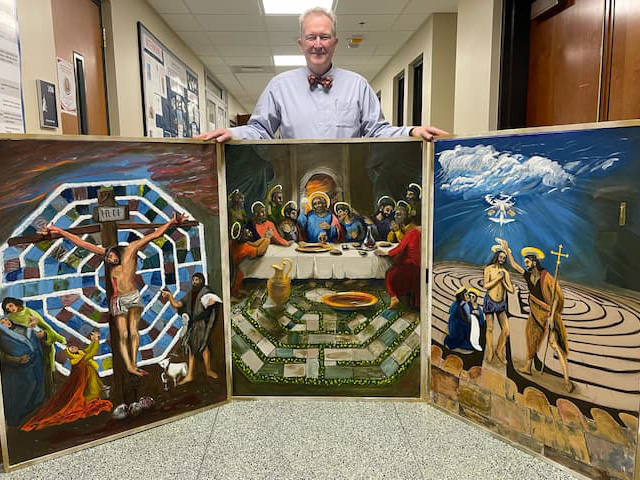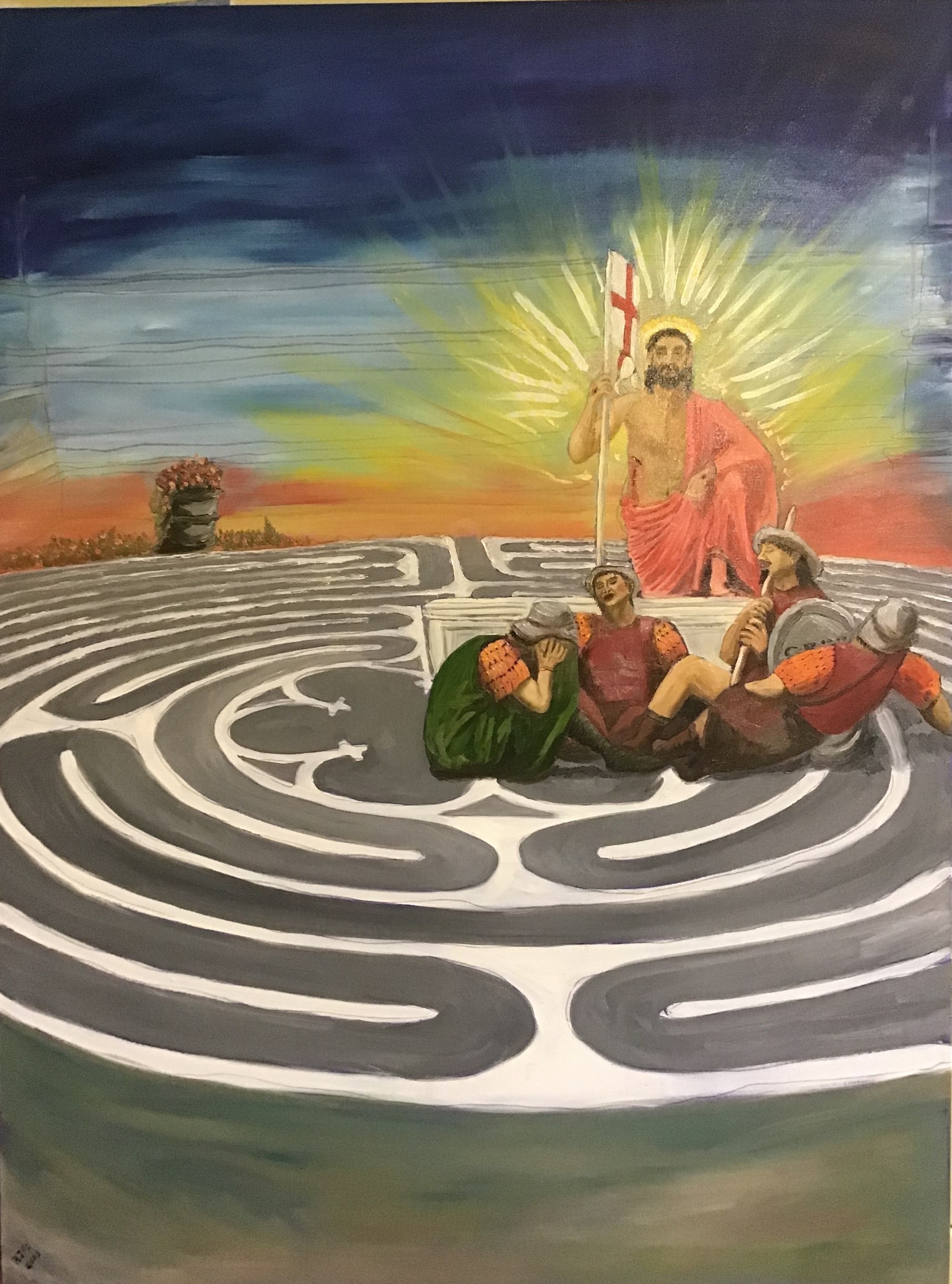
Nearly two years after the shooting at St. Stephen's Episcopal Church in Vestavia Hills, Alabama, psychology chair and professor Rob Elsner is honoring the three lives lost with his latest project, Pilgrimage of the People: Liturgies for Labyrinth Worship throughout the Church Year.
Elsner is a member of St. Stephen's, who provided trauma therapy to parishioners after the tragedy. To aid in healing, members suggested a labyrinth at the time, a spiritual journey to help quiet the mind and focus on God. Elsner wrote the liturgy, the order of worship for the service.
"We expected three to five people to attend the first liturgy, and 38 showed up," he said. "This told me that there was more of a hunger for centering prayer and worship than we had expected, so I started writing liturgies for the entire church year."
These liturgies are only the first part of the project. The second part includes a series of 3’ x 4’ oil canvas paintings. Each of them displays a Renaissance portrayal of events in the life of Christ (birth, baptism, communion, crucifixion, resurrection, and ascension) and a labyrinth close to Elsner's heart.
In Christianity, labyrinths, represented by a maze, symbolize a believer's spiritual journey through life filled with highs and lows. And when one gets lost along the way, God is at the center of everything, redirecting their path. You might find them at churches, gardens or even hospitals for healing.
"I have walked labyrinths since the 1960s and know them to be excellent meditative tools to help focus prayers on God as ‘abba’ in a close personal relationship," Elsner said. "I wanted to share that with others seeking such a relationship."
 This labor of love took months to complete. The paintings took two months to plan, and this does not even account for the additional three months it took to bring them to life.
This labor of love took months to complete. The paintings took two months to plan, and this does not even account for the additional three months it took to bring them to life.
"I was so blessed that Larry Thompson [Samford’s School of the Arts Associate Dean] allowed me to use the Samford Art Lofts to paint, making the process much easier and faster," said Elsner.
A psychology professor by day and a painter by night, Elsner has been painting a canvas or two per year since his wife encouraged him while living in Ireland 20 years ago.
"I have not taken any classes, but I really wish I had," he said. "A few conversations with Samford art faculty and students in the Art Lofts really increased the quality of the work tremendously."
When people look at his paintings, Elsner hopes people see that we are all on journeys to know God. Like the maze represented as a labyrinth in his paintings, sometimes, "We go left and right, sometimes backward and yet God is always there with us. Sometimes, we see God at the center of our journey; sometimes, we see Him at the beginning. Sometimes, we recognize that 'He is' at awkward moments. And yet, He is always there, whether we see Him or not. He sees us."
Elsner has offered the paintings to Samford's Center for Worship and the Arts to auction off and use the proceeds to provide grants for students using art to glorify God.
